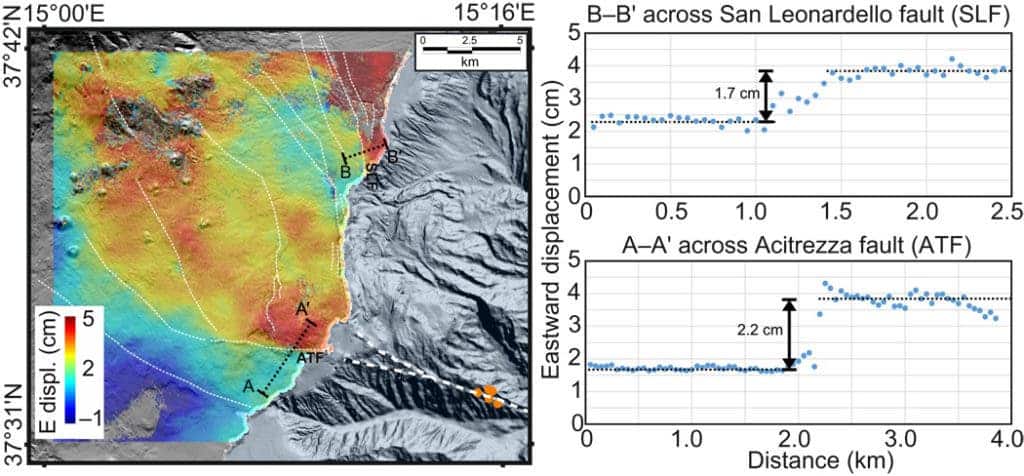Researchers carried out a precise survey of the mountain’s shifting tilt, and the results are pretty worrying.

Mount Etna is an active stratovolcano on the east coast of the Island of Sicily. It’s by far the largest active volcano in Italy and second largest in Europe, surpassed only by the Mount Teide in Tenerife. Mount Etna is one of the world’s most active volcanoes and is almost always in a state of activity. This is good on one hand since fertile volcanic soils support extensive agriculture, with vineyards and orchards on the volcano’s lower slopes. But on the other hand, because the area is so densely populated, its eruptions are also very hazardous.
But there might be even more to worry about.
Ever since the 1980s, geologists have known that Etna’s south-eastern flank is falling into the sea at a rate of a few centimetres per year, but this process has not been thoroughly understood. This was once believed to be caused by increasing pressure from magma swelling from the depths. But the new study finds that it may be gravity, not magma, that brings the doom of Etna.
A team led by Morelia Urlaub from the EOMAR Helmholtz Centre for Ocean Research Kiel, in Germany, found that the flank is actually collapsing under its own weight.
They gathered data from seafloor instruments, tracking the volcano’s movement. Initially, for the first 15 months, nothing happened. Then, over only 8 days, Mount Etna’s southeastern flank moved 4 centimeters to the east — a much larger displacement than what was observed on land. This suggests that previous observations, which largely based on land observations, may have been understatements. The magmatic activity also influences flank movement, but overall, the gravitational collapse appears to be the dominating factor.

Researchers also raise an alarm flag, using some of the strongest language realistically available in scientific publishing:
“We cannot exclude flank movement to evolve into catastrophic collapse, implying that Etna’s flank movement poses a much greater hazard than previously thought,” the study reads.
Based on available information, there’s no telling when or where this might collapse, and how hazardous this collapse may be.
The study has been published in Science Advances.


